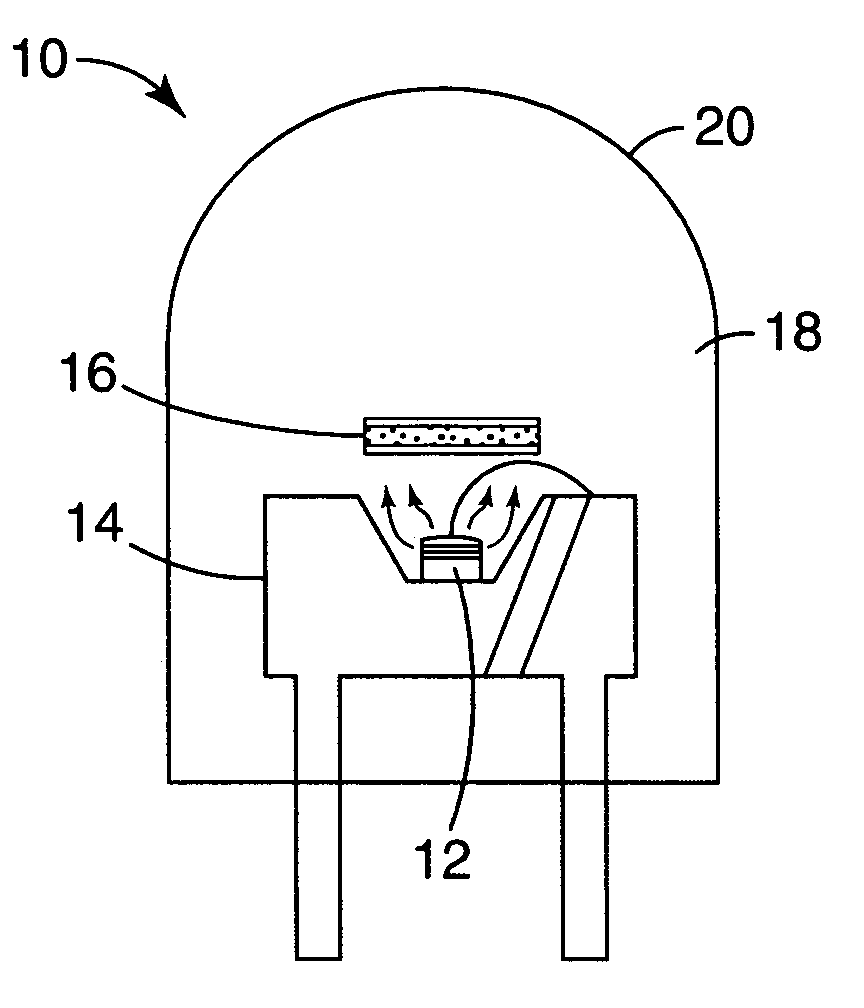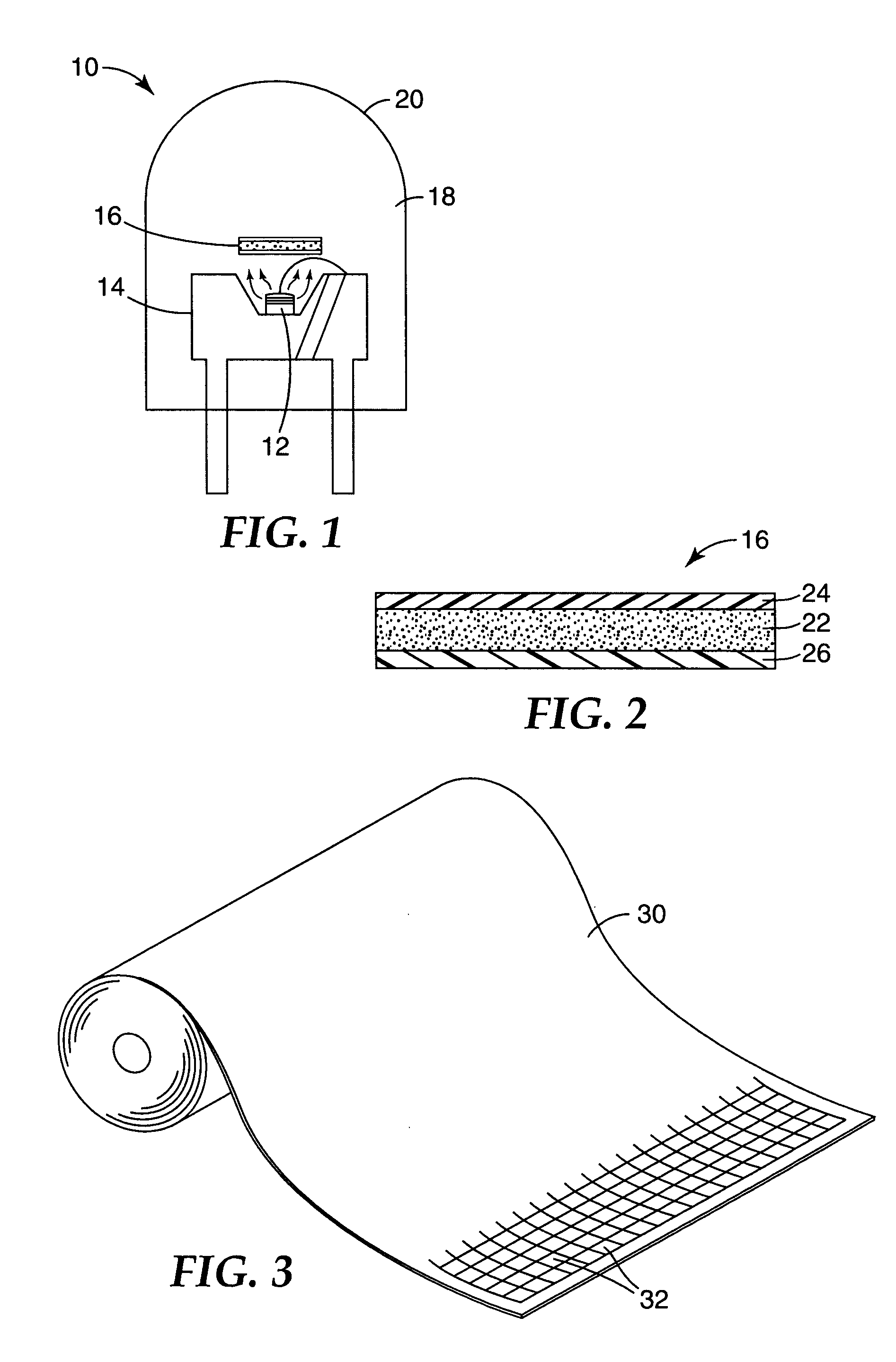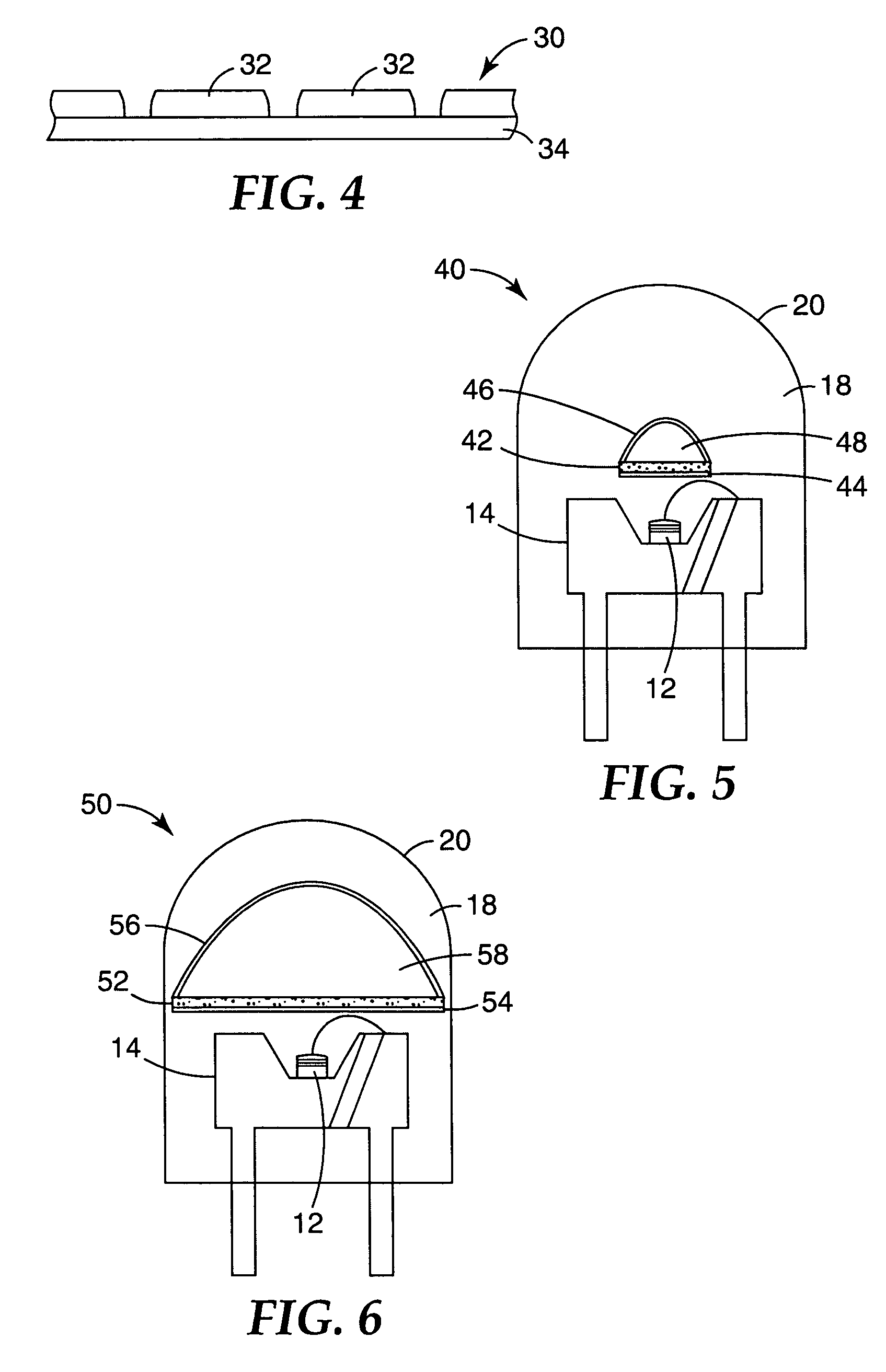Phosphor based light sources having a non-planar long pass reflector
a phosphor-based light source and long-pass reflector technology, applied in the field of light sources, can solve the problems of reducing reflectivity, absorbing, scattering, etc., and achieve the effect of maintaining reflectivity
- Summary
- Abstract
- Description
- Claims
- Application Information
AI Technical Summary
Benefits of technology
Problems solved by technology
Method used
Image
Examples
example 1
[0112]A coating of cerium-doped yttrium aluminum garnet (YAG:Ce) phosphor was made on single layer clear poly(ethylene terephthalate) (PET) film by the following procedure.
[0113]12.00 grams of fluorpolymer resin (designated “Phosphor Ink Part A: Resin Solution”, part number: 1INR001, rev: AA, batch number: KY4-035 by Durel Company of Chandler, Ariz., USA) was placed into a 40 milliliter glass jar. 15.02 grams of YAG:Ce phosphor (designated QMK58 / F-U1 Lot #13235 by Phosphor Technology, Ltd. of Stevenage, England) was measured into a weighing dish. The phosphor was mixed into the resin by first adding one-half of the phosphor to the resin and mixing it in by hand with a stainless steel spatula and then adding the other half and mixing it by hand. The phosphor and resin were mixed by hand until the mixture had a smooth texture and uniform appearance. The jar containing the resulting phosphor paste was covered with a lid and placed on a bottle roller for about 30 minutes.
[0114]A sheet o...
example 2
[0116]A piece of multi-layer optical film (MOF) having alternating layers of PET and co-PMMA and having a normal-incidence reflection band (measured at half-maximum) from about 600 nm to about 1070 nm (made in accordance with U.S. Pat. No. 6,531,230) was placed in the film adaptor between the phosphor coated PET film of Example 1 and the blue LED of Example 1 (operated at 20 milliamps). The spectrum was recorded and is shown in FIG. 22 as the curve labeled “Example 2”. Using software supplied with the spectroradiometer, the total luminous flux emitted into the integrating sphere was calculated to be 0.118 lumens. This represents an increase in luminous intensity of 73%.
example 3
[0117]A coating of zinc sulfide (ZnS) phosphor was made on poly (ethylene terepthalate) (PET) film by the following procedure:
[0118]20.04 grams of fluorpolymer resin (designated “Phosphor Ink Part A: Resin Solution”, part number: 1INR001, rev: AA, batch number: KY4-035 by Durel Company of Chandler, Ariz., USA) was placed into a 2 ounce glass jar. 20.06 grams of ZnS phosphor (designated GL29A / N-C1 Lot #11382 by Phosphor Technology, Ltd. of Stevenage, England) was measured into a weighing dish. The phosphor was mixed into the resin by first adding one-half of the phosphor to the resin and mixing it in by hand with a stainless steel spatula and then adding the other half and mixing it by hand. The phosphor and resin were mixed by hand until the mixture had a smooth texture and uniform appearance. The jar containing the resulting phosphor paste was covered with a lid and placed on a bottle roller for about 24 hours.
[0119]A sheet of clear PET film by 3M Company (St. Paul, Minn.) 6 inches...
PUM
 Login to View More
Login to View More Abstract
Description
Claims
Application Information
 Login to View More
Login to View More - R&D
- Intellectual Property
- Life Sciences
- Materials
- Tech Scout
- Unparalleled Data Quality
- Higher Quality Content
- 60% Fewer Hallucinations
Browse by: Latest US Patents, China's latest patents, Technical Efficacy Thesaurus, Application Domain, Technology Topic, Popular Technical Reports.
© 2025 PatSnap. All rights reserved.Legal|Privacy policy|Modern Slavery Act Transparency Statement|Sitemap|About US| Contact US: help@patsnap.com



